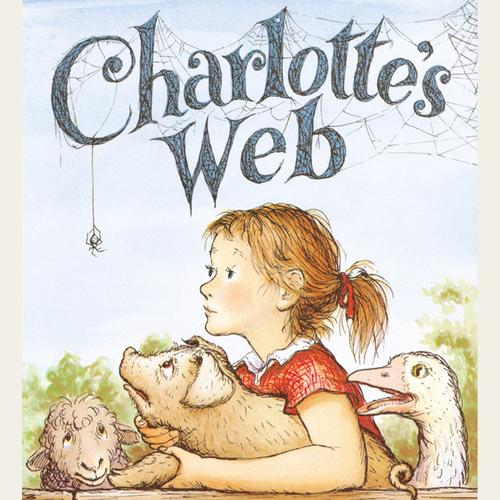When I began to write this Children's Media Critic, I wanted to focus on kids movies: I had seen so many parents dismiss these films as simply something to entertain the kids, and I wanted to show that like any work of art, if you look at KidVid carefully, you will learn many unexpected things. I should remember, though, that books are also a medium of communication, and on a day-to-day level, Helena spends more time reading (or more accurately, listening to) books than she does watching a movie. So today: Charlotte's Web, which we just finished reading last night.
For those who are a long way form childhood, a quick summary of the novel: Fern, a little girl form a farm, convinces her father not to cull the runt of a pig's litter. She adopts little Wilbur, feeds him from a baby bottle, and takes him for a walk in a stroller. Eventually, however, she has to sell him to her uncle, who has a farm big enough to keep the pig. There, lonely Wilbur meets Charlotte, a gray spider, who writes words about him in her web -- radiant. some pig, humble -- thus winning attention for Wilbur, a win at the county fair, and a stay of execution from becoming bacon. In the end, Charlotte dies, but several of her many daughters stay with Wilbur on the farm.
Like with any book, the genius is in the details, especially in EB White's elegant prose. It was only years after my father read me the book that I found out that White was one of the great writers for the New Yorker and enough of an authority on style and grammar that his book was an obligatory reference in high school and college.
Rita, Helena, and I are now working in communities where, like in children's literature, animals and humans communicate. There is, however, a profound difference between Charlotte's Web (all of the children's literature descending form Aesop, really) and Amazonian Indian thought. When animals in European and North American children's books talk, we hear the voice of a human being. Wilbur's fears and prides are those of a small child; Charlotte cares for him like a (human) maiden aunt. The purpose of putting animals in the center of the story is to elucidate human interactions and lessons.
Among Amazonian Indians, however, one tells stories about animals as animals. You want to get into a jaguar's head because you want to know how he hunts, and so learn from him. The shaman enters a trance and transforms himself into a caiman in order to understand why it hunts the children from the community. Like in Charlotte's Web, animals in human stories are there to serve human purposes, but instead of projecting human characteristics onto beasts, the Amazonian narrative projects the beasts' perspective into us.
Helena just got a baby rabbit for her birthday, and it has been fascinating to watch her interact with the little creature. At first, she treated it as a doll. Then she saw it as her baby. She is an observant little girl, though, and she has come to see that none of these relations come to terms with the profound otherness of the rabbit, the something else that lies behind the blue eyes of the furry white thing. Animals have a very different way of seeing the world from people, and I'm sad that European kids stories miss that in their attempt to teach moral or personal lessons.
On the other hand, the freedom to play with ideas that comes with animal stories opens up wonderful possibilities for reflecting about all sorts of things. Over the next couple of posts, I'll talk about that, more liberating, aspect of Charlotte's Web.


No comments:
Post a Comment